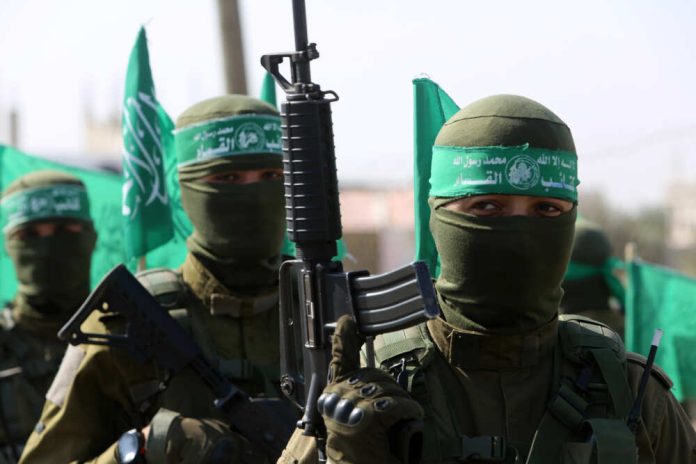
Despite severe setbacks from Israeli assaults, Hamas retains a foothold amidst regional instability and a fragile ceasefire.
At a Glance
- A cease-fire and hostage release deal between Israel and Hamas is mediated by the U.S., Qatari, and Egyptian officials.
- The agreement entails hostages’ release, Palestinian prisoners, Israeli withdrawal from Gaza, and humanitarian aid.
- Experts analyze implications for a two-state solution, Netanyahu’s strategy, and regional changes.
- Amid isolation, Hamas remains significant in Gaza, particularly in displacement camps.
Ceasefire and Hostage Deal
The recent ceasefire and hostage release deal between Israel and Hamas marks a significant development in their long-standing conflict. Mediated by the U.S., Qatari, and Egyptian officials, the agreement follows months of intense military action that has rightfully impacted Hamas’s capabilities in Gaza. The deal aims to occur in phases over six weeks, requiring the release of hostages and Palestinian prisoners while facilitating Israeli withdrawal from Gaza and enabling increased humanitarian aid.
The tentative arrangement hinges on the approval of the Israeli cabinet. Observers believe its potential to halt conflict indefinitely could affect the reconstruction of Gaza and security arrangements in the region. As experts analyze the deal, concerns emerge over the freeze in hostilities perpetuating Gaza’s dependency on aid, with no forthcoming governance alternative to Hamas.
Implications for Hamas and Regional Dynamics
Israel’s campaign in Gaza, marked by precise strikes against Hamas leaders and critical infrastructure, has significantly weakened the organization and disrupted its operations. While Hamas continues to assert control in certain areas, its military and regional standing have been severely compromised. The October 2023 assault, which aimed to spark a wider conflict, instead deepened Hamas’s isolation, leaving its network of allies diminished or destroyed. Even so, its presence in Gaza’s displacement camps reflects the remaining challenges in fully eliminating its influence amidst ongoing regional instability.
“Hamas’s perpetual presence remains undeniable,” said Ibrahim Madhoun, an analyst close to the terrorist group.
Changes within the broader region include the weakening of Hezbollah and Iran, which had been long-standing supporters of Hamas. Analysts indicate the “Trump effect” could help solidify the ceasefire, suggesting a possible pivot in Donald Trump’s allegiances with Israeli leadership.
Challenges and Future Prospects
Despite the severe losses Hamas has sustained, its capacity to recruit fighters remains a critical concern. U.S. officials highlight the rapid replenishment of its ranks, underscoring the persistent threat of future violence. The ceasefire, if upheld, risks providing Hamas an opportunity to regroup and strengthen its influence. However, failure to maintain peace would likely further degrade Hamas’s capabilities, solidifying Israel’s ability to protect its citizens and potentially paving the way for decisive action to ensure long-term regional stability.
The ceasefire deal underscores the delicate balance of power and the critical role of international cooperation in addressing the conflict. Global pressure to maintain stability may help prevent renewed violence, though it is essential to ensure that Hamas does not exploit the situation to entrench its influence in Gaza. Israel, as a key player in safeguarding regional security, must navigate these complexities with strength and resolve, while facing challenges to its global reputation in its pursuit of lasting peace and security for its citizens.





